YouTube's 2025 NFT and Gaming Content Crackdown: A Complete Guide for Web3 & Crypto Advertising
Crypto Twitter has offered a lot of speculation as to what might happen come November 17th, but let's look at the facts as they're known so far.
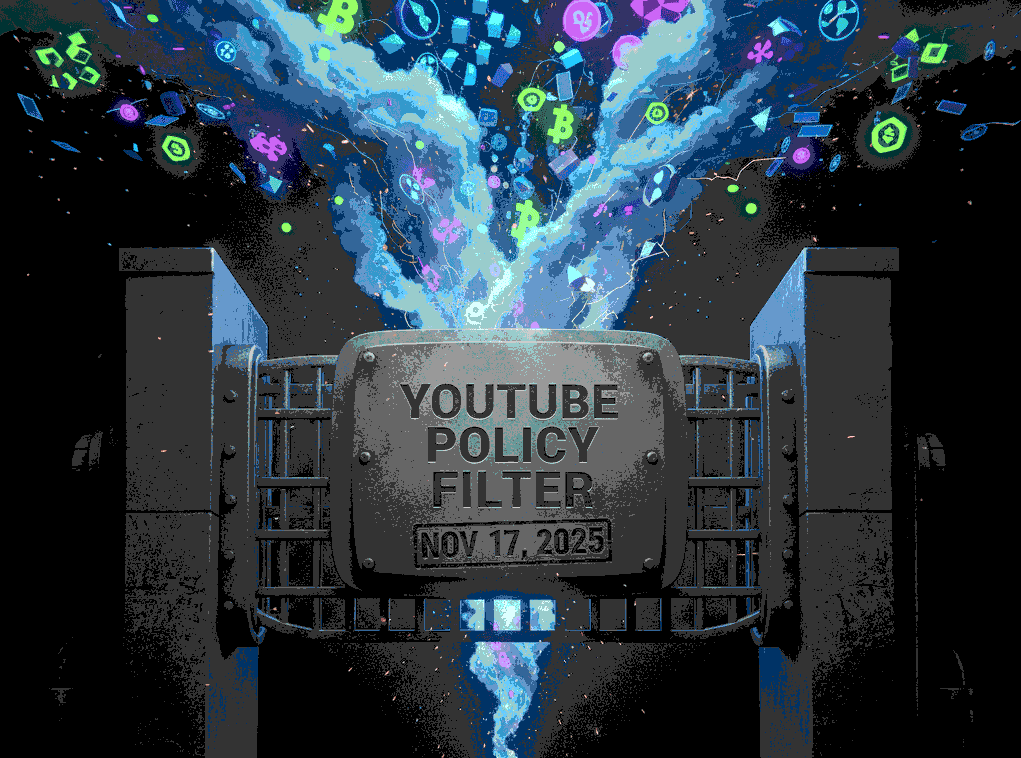
The circumstances for Web3 content creation is undergoing its most significant transformation to date. YouTube, the world's largest video platform, has announced sweeping policy changes that will fundamentally alter how creators approach NFTs, crypto, and blockchain gaming content.
Set to take effect on November 17, 2025, these updates represent far more than routine guideline adjustments: they signal a paradigm shift in how mainstream platforms regulate the intersection of digital assets, gaming, and content monetization.
This comprehensive guide from Lever.io breaks down everything you need to know: the specific policy changes, their underlying motivations, real-world impacts on creators, practical compliance strategies, and what the future holds for Web3 content on YouTube and beyond.
Understanding the Policy Changes: What's Actually Changing?
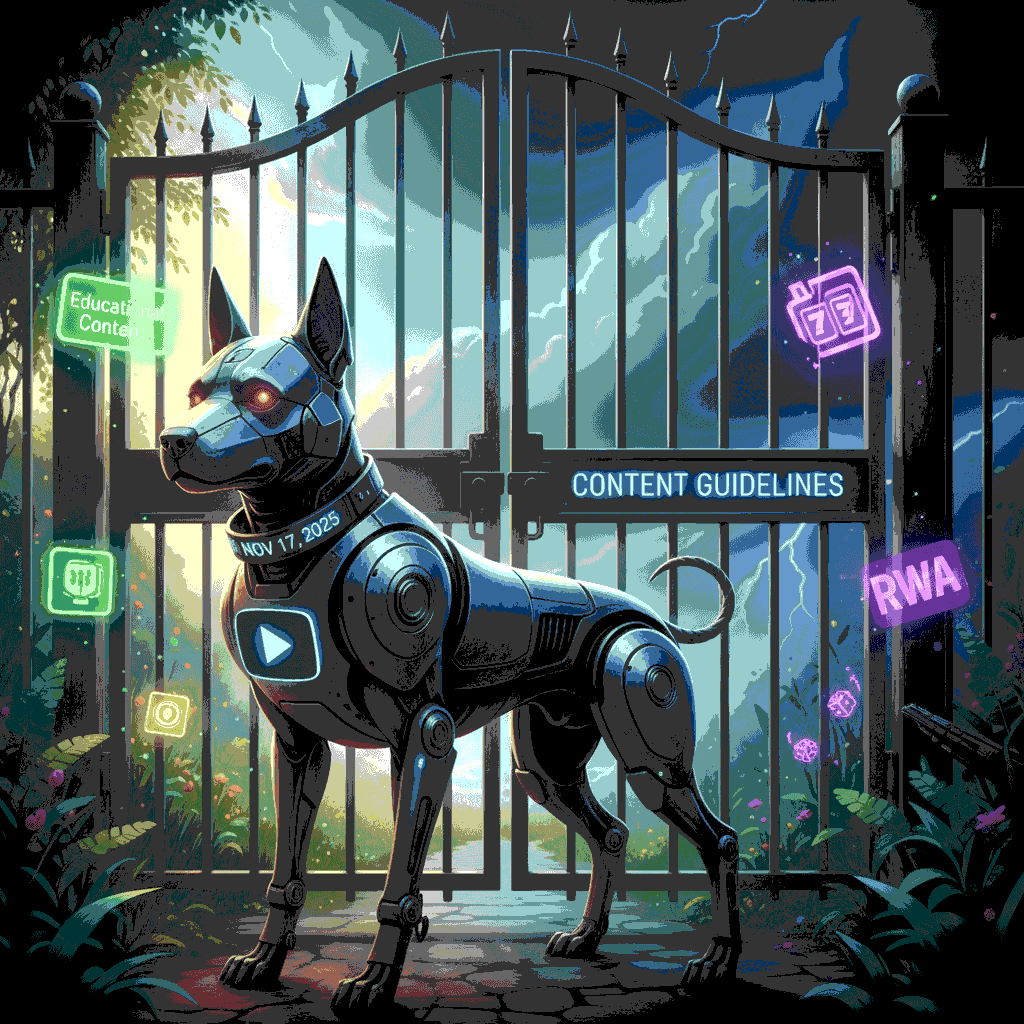
Crypto Twitter has offered a lot of speculation as to what might happen come November 17th, but let's look at the facts as they're known so far. YouTube's November 2025 Community Guidelines revision centers on two primary areas:
1. Digital Asset Gambling Restrictions
YouTube is implementing strict enforcement against content that promotes or facilitates online gambling involving digital assets. This encompasses:
- NFT-based gambling platforms: Videos directing viewers to sites where NFTs can be wagered, bet, or used in casino-style games
- Cryptocurrency wagering: Content promoting betting or gambling with bitcoin, Ethereum, or other cryptocurrencies
- In-game asset gambling: Videos featuring or linking to sites where virtual items like skins, loot boxes, or other in-game assets are used for gambling purposes
- Unregulated raffle and lottery mechanics: Content promoting randomized NFT drops, mystery boxes, or similar mechanisms that function as gambling
There's a critical distinction between content that will be allowed vs. disallowed content: platforms must be certified by Google to be featured in gambling-related content. This effectively eliminates most decentralized or Web3-native platforms from YouTube promotion, as few meet Google's certification requirements.
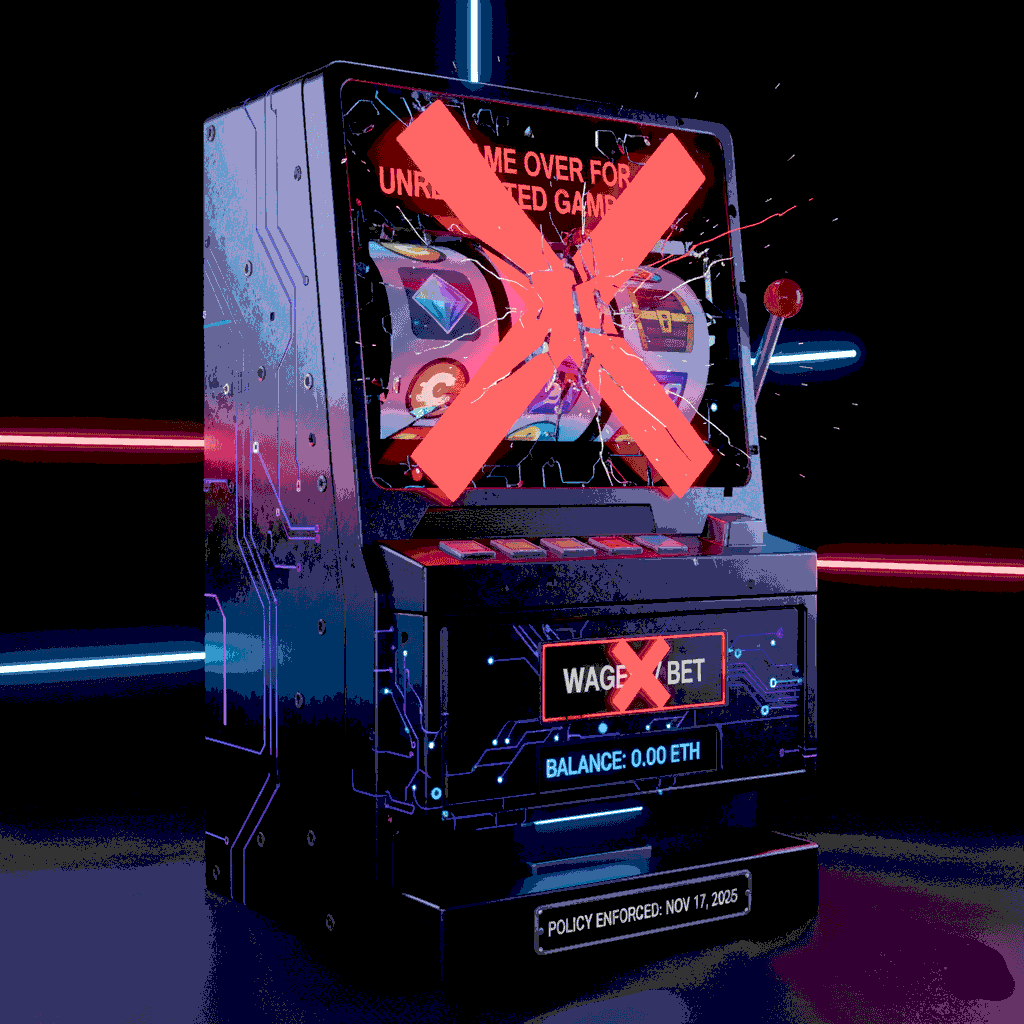
2. Graphic Violence in Gaming Content
Videos featuring assets tied to monetary value are not the only material under scrutiny. Simultaneously, YouTube is expanding age restrictions on gaming videos featuring:
- Scenes depicting torture or mass violence against non-combatant characters
- Realistic graphic combat sequences showing explicit gore or brutality
- Gameplay footage of indiscriminate violence against civilians or NPCs
- Graphic fatality moves or execution sequences in fighting games
Videos containing such content will be age-restricted, making them inaccessible to users under 18 or those not logged into verified accounts. This significantly limits potential reach and monetization opportunities for creators.
Not Everything Will Be Banned | What's Still Allowed?
The silver lining in the clouds is that the upcoming restrictions on content won't be broadly sweeping bans. YouTube has clarified that not all digital asset or violent gaming content faces restrictions:
- Educational and analytical content: Discussions about NFT technology, blockchain mechanics, or cryptocurrency that don't promote specific gambling platforms remain permissible
- Utility-focused NFT content: Videos about NFTs as digital collectibles, access passes, art, or functional tokens (without gambling elements) are still acceptable
- Certified platform partnerships: Content featuring Google-approved, regulated gambling sites can continue with appropriate disclosures
The line between compliant and non-compliant content, however, has become significantly narrower and more nuanced. As for the violence side of the restrictions:
- Contextualized narrative violence: Story-driven or scripted violence in games, when properly framed within narrative context, may avoid restrictions
So there you have it: as long as digital asset content remains educational, and so long as violence only occurs as part of telling a story, then it will be allowed!
Emerging Opportunities for Creators in Web3 and Crypto
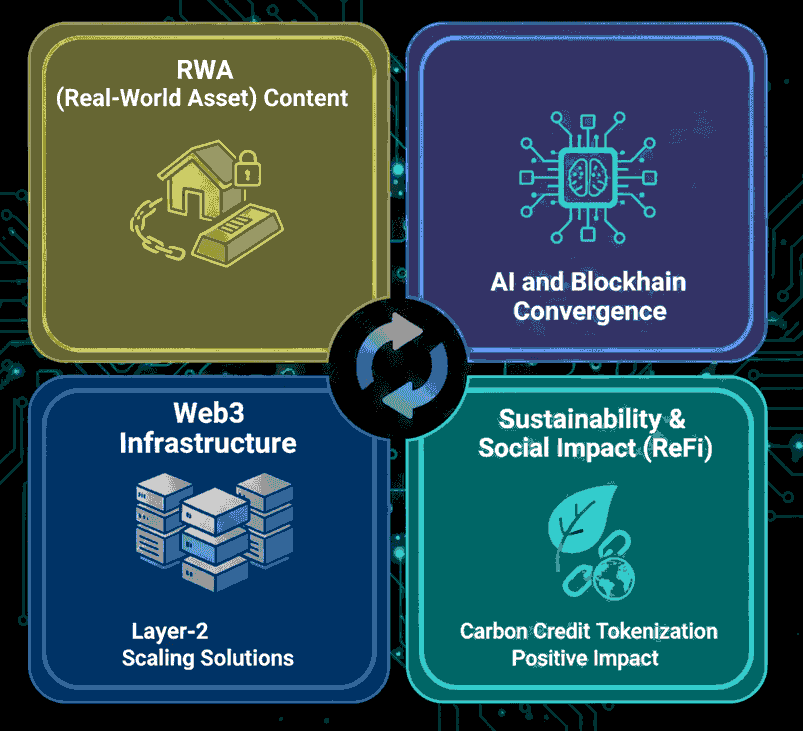
Despite upcoming restrictions, significant opportunities exist for forward-thinking creators. As Web3 continues to grow as an industry, we'll continue to see growth in independent media creators covering these sectors:
RWA (Real-World Asset) Content | The tokenization of real-world assets (real estate, commodities, bonds, art) offers stable, non-speculative content opportunities:
- Educational content about how RWA tokenization works
- Coverage of institutional adoption and regulated offerings
- Practical applications without gambling associations
- Intersection with traditional finance (TradFi) topics
AI and Blockchain Convergence | The intersection of AI and blockchain technology presents fresh content angles:
- AI-generated NFT art with provenance tracking
- Machine learning applications in blockchain security
- Decentralized AI training and deployment
- Smart contract automation and optimization
Web3 Infrastructure: Deep-dive technical content on blockchain infrastructure:
- Consensus mechanisms and protocol development
- Scalability solutions and Layer-2 technologies
- Interoperability and cross-chain technologies
- Developer tools and frameworks
Sustainability and Social Impact: Growing interest in blockchain's positive applications:
- Carbon credit tokenization
- Supply chain transparency
- Charitable giving and impact tracking
- Regenerative finance (ReFi) projects
For creators that peddle unregistered blackjack games or feature fatality moves that rip the spines out of milkmen NPCs, there's a clear sign that it's time to pivot. However, there are obviously plenty of opportunities to cover other areas of interest in Web3 and gaming!
Conclusion: Adaptation as Competitive Advantage
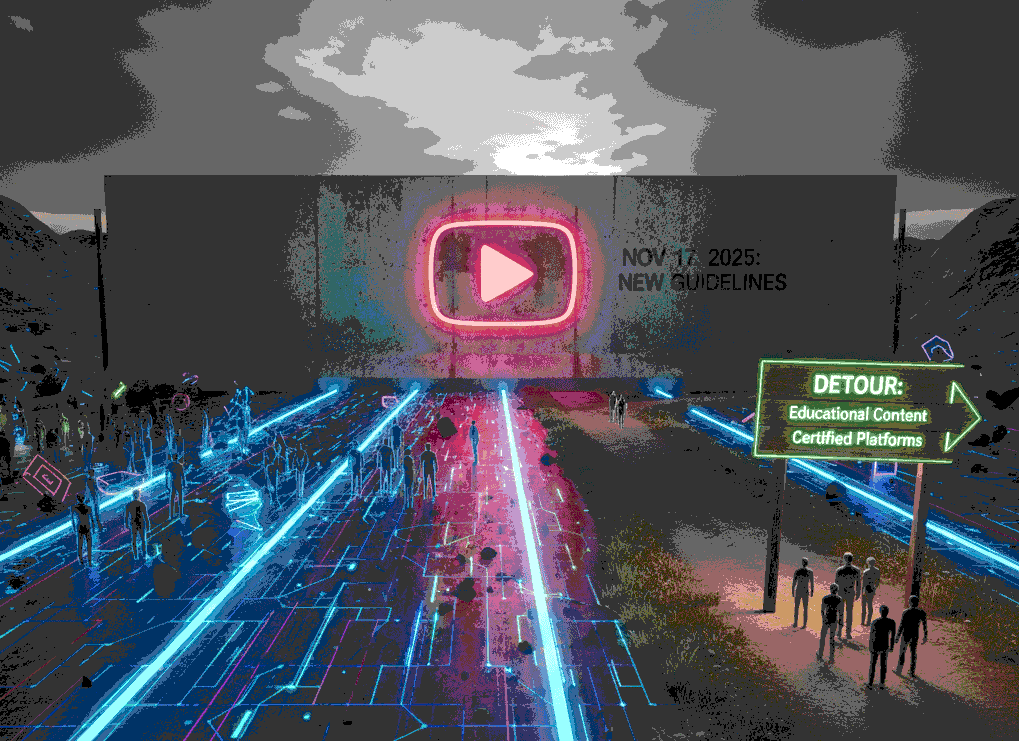
YouTube's November 17, 2025 policy updates represent an inflection point that will separate sophisticated, sustainable Web3 creators from those relying on short-term hype, gambling, and speculative promotion.
What Creators Can Do Today
- Audit content immediately.
Every day before the November 17 deadline is an opportunity to get ahead of enforcement rather than scrambling to respond to strikes and restrictions that can damage a channel's ability to continue posting content in the future.
- Shift from promotional to educational.
Move content focus from speculative to utility-focused, from single-platform to diversified presence. The creators who thrive will be those who provide genuine value, providing education, entertainment, and community, rather than those promising monetary gains (which is shady).
Also, don't forget, no more shooting civilians on the side of the road in gameplay. At least, no more streaming it while it happens.
- Take the Long-Term View.
These restrictions, while challenging, may ultimately benefit Web3 by filtering out scams and low-quality projects. Creators will be forced to build mainstream credibility and focus on innovation and real utility rather than speculation (the value follows the tech).
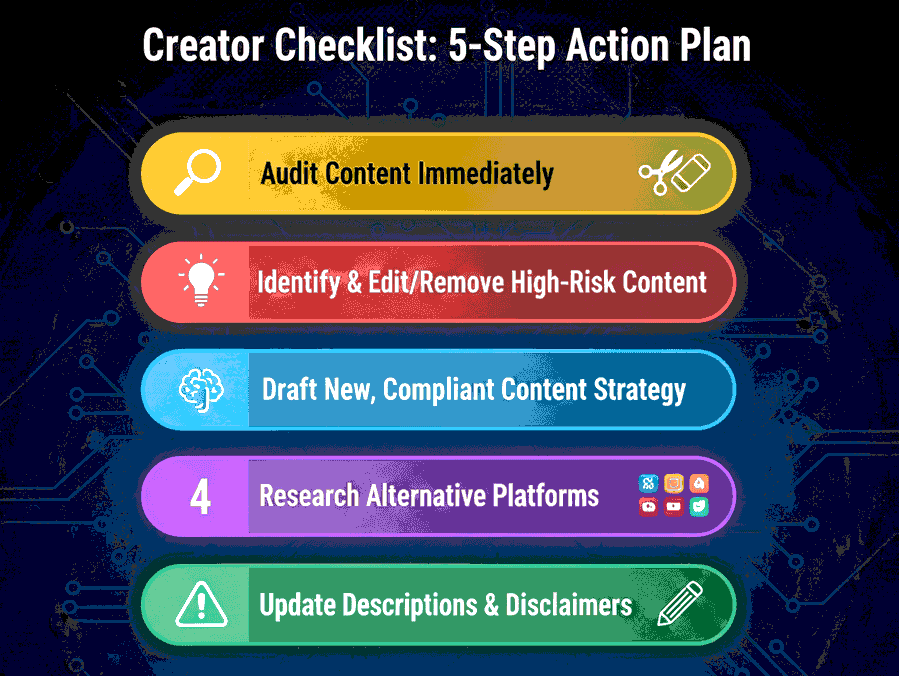
Creator Checklist: Action Steps for This Week
- Complete a full audit of your video library by November 17
- Identify and edit or remove high-risk content
- Draft new content strategy focusing on compliant topics
- Research and test at least two alternative platforms
- Update all video descriptions and pinned comments with appropriate disclaimers
Creators who adapt quickly and thoroughly won't just survive these changes will a gain competitive advantage as others struggle.
Audiences value authenticity, education, and trust, so by positioning yourself as a reliable, compliant source of Web3 information, you'll build lasting audience relationships that transcend platform policy changes.
Navigate KOL Marketing with Confidence: Lever.io Has You Covered
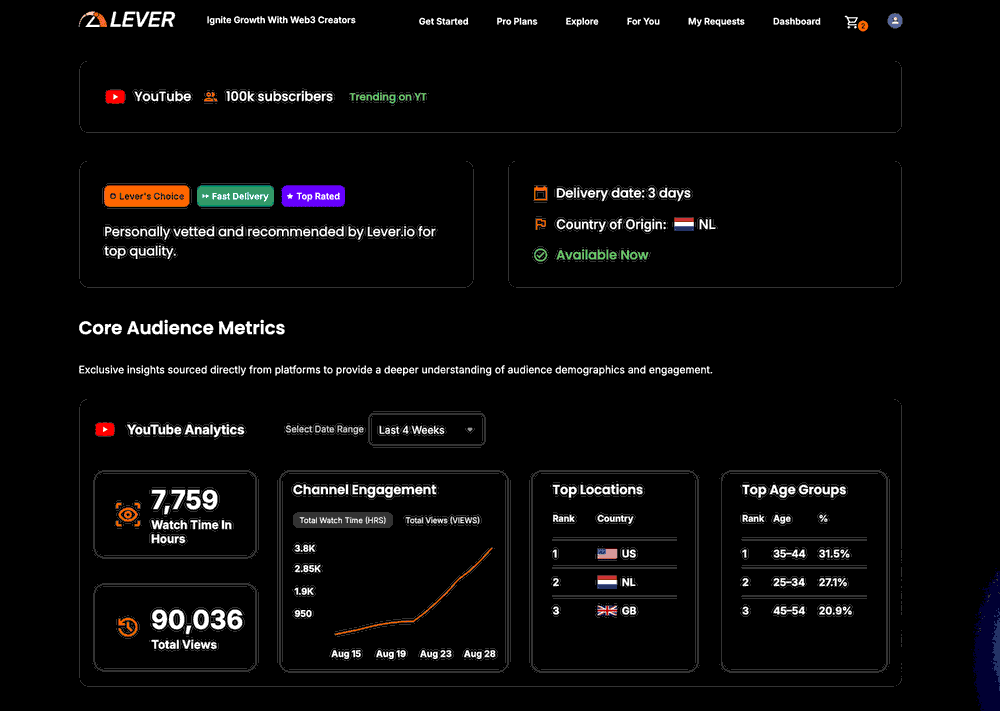
Managing KOL campaigns across multiple platforms shouldn't feel like navigating a minefield. That's where Lever comes in.
As YouTube tightens restrictions, successful Web3 projects need a smarter approach to influencer marketing, one that maximizes reach across the platforms where your audience actually engages.
Why Lever.io is Essential for Post-November 17 Marketing:
✅ Built-In Compliance Safeguards - Our Campaign Managers help ensure creators participating in your KOL campaigns follow platform guidelines, reducing the risk of content removal and other setbacks.
✅ Multi-Platform Network - Access vetted influencers across TikTok, X (Twitter), and other channels, not just YouTube.

✅ Pre-Vetted Web3 KOLs - Work with creators who understand blockchain technology and its audience. Lever creators have a combined experience of hundreds of years discussing digital assets, and know how to present them for maximum impact without damaging their platform reputation.
✅ Risk Mitigation - Our escrow service ensures that your funding remains intact and held in the platform until deadlines are met and deliverables are live. This also means that brands never have to worry about paying a creator and then finding out that creator's channel got shut down for unrelated content!
Don't let YouTube changes derail your marketing strategy. While others scramble to adapt, Lever.io clients are already working with compliant, diversified influencers and KOLs that drive results without the risk.
Ready to scale your Web3 marketing the right way? Visit Lever.io to connect with compliant KOLs across every major platform and get the tools you need to navigate this new landscape with confidence.

